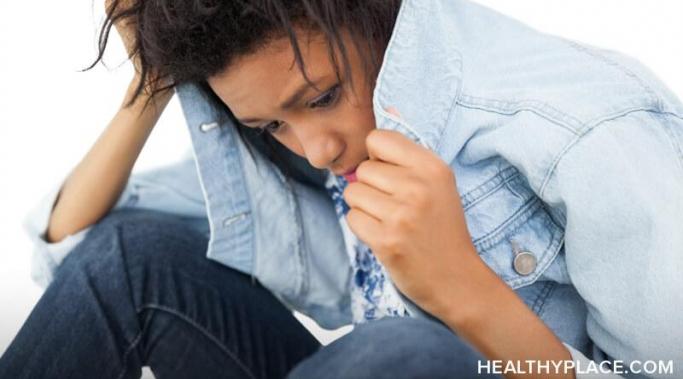I've kept strong family boundaries in place even as the COVID-19 pandemic upended life as we've known it. Stores are closed, gyms are shut down, and businesses are struggling to get by as communities across the world hunker inside their homes. While the coronavirus probably won't be much of an issue for me as a healthy, 24-year-old woman, I worry about those around me. I think about what would happen if my coaches or my friends with compromised immune systems fell ill. I worry about my sister living alone while her community is shut down. And I worry about my family members catching COVID-19 even though I've had strong family boundaries in place due to their abuse.
Grief
Posttraumatic stress disorder (PTSD) and grief are very similar at their core. They crash into our lives like a train skidding off the rails, wreck everything that we once knew, and leave us picking up the pieces of our lives in the wreckage. And for some, grief and PTSD occur at the same time. Traumatic events that involve the loss of something or someone special (a car accident, for example) can cause people to develop PTSD and feelings of grief concurrently. For others, trauma and grief occur at different points in their lives but still overlap, forcing them to deal with the emotions of both.
Shame and suicidal thoughts are often part of living with complex posttraumatic stress disorder (PTSD), especially after childhood trauma. When you are experiencing shame, those thoughts can become worse. Understanding how to identify shame and have self-compassion can help with suicide prevention. (Note: This post contains a trigger warning.)
It takes time, but you can heal the emotional pain of complex posttraumatic stress disorder (PTSD). Living with PTSD brings intense emotional pain. Complex PTSD comes from many incidences of interpersonal trauma. This results in often unbearable hurt as you consider all of the people in your life who have let you down or abused you. Sometimes, it can feel as if it's a gaping wound in your soul that will never heal.
Posttraumatic stress disorder (PTSD) and suicidal ideation are linked, and I have to admit that this week I found myself reverting to thoughts of ending my life. When life gets overwhelming, as it has for me lately, it's so easy to slip into thinking that things would be much easier if I just didn't have to feel anymore. Out of the blue, my employers informed me, and the other nurse practitioners I work with, that we will be jobless in six weeks. We were all left in utter shock.
Three years ago this month I joined the HealthyPlace blogging team by creating this blog. I did so because I wanted to write about symptoms of posttraumatic stress disorder (PTSD) and what it takes to heal. This was a personal mission: I am a PTSD survivor who struggled for almost 30 years before launching a healing rampage that led me to freedom. And now, while I'm sad to do it, I must say goodbye to Trauma! A PTSD Blog.
For a long time after my trauma I felt sucked into the darkness and despair of grief, loss, fear, anxiety and the frustration of the same question I repeatedly asked myself,
"Who am I now?"
It seemed that trauma and PTSD symptoms had branded me for life and there was no way to:
go back to who I'd been before (I was right about that)
go forward and become someone new (I was wrong about that)
What do we do when we get stuck in that place??
Posttraumatic-stress disorder (PTSD) involves a lot of sadness: about your having been victimized, about having developed a persistent mental disorder (and that's exactly what it is), about how few people understand what happened to you, about how few people understand how your life has been changed as a result, and about how difficult it is to get it all resolved - fixed - taken care of. And that's hardly a complete list. What do these all have in common? Loss. Sadness is a reaction we have automatically and outside any direct control when we realize we've lost something that matters.
What can you do about it? Two things, basically. You can shift your attention or you can deal with the problem directly. The first option is almost always the easiest, but you should know that it's temporary at best.
I have been asked by a reader to “explain the interaction between grief and PTSD”. Her brief question also made reference to “"PTSD symptoms" of flashbacks, nightmares, and intrusive thoughts” whose content relates to her “death trauma”. There is a lot to respond to in this query.
As with many common words, most of us don’t much pause when we encounter the word “grief”. It has, however, received a detailed and careful consideration in psychology, and I have written in detail about some aspects of this elsewhere. In summary, grief is a variety of a feeling called distress, which is the brain’s automatic response to loss. It lies on the high end of a continuum that runs from minor loss (say, of your car keys) to extreme loss (such as of a child), which can be called “anguish”. Put into words, that continuum might look like this: distress → sadness → sorrow → grief → anguish. In summary, grief is involuntary, fairly serious, and can become very serious.








